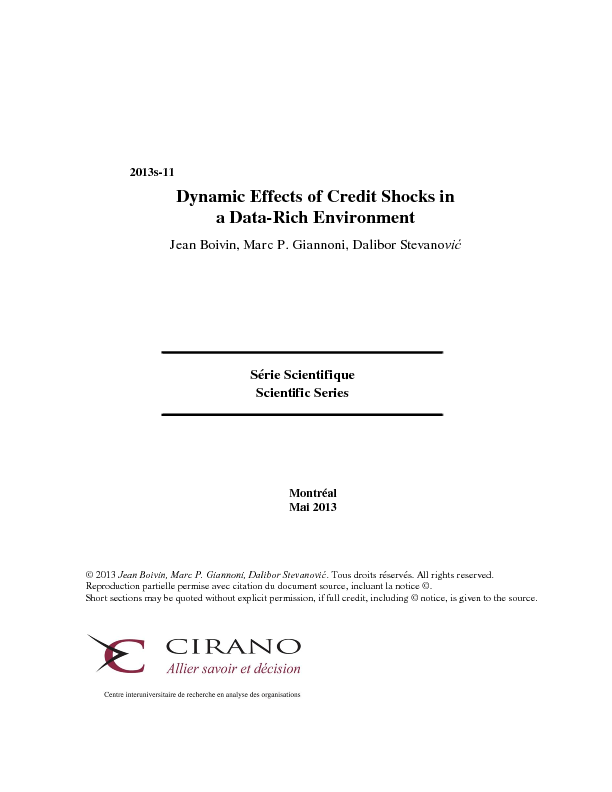Dynamic Effects of Credit Shocks in a Data-Rich Environment
We examine the dynamic effects of credit shocks using a large data set of U.S. economic and financial indicators in a structural factor model. The identified credit shocks, interpreted as unexpected deteriorations of credit market conditions, immediately increase credit spreads, decrease rates on Treasury securities, and cause large and persistent downturns in the activity of many economic sectors. Such shocks are found to have important effects on real activity measures, aggregate prices, leading indicators, and credit spreads. Our identification procedure does not require any timing restrictions between the financial and macroeconomic factors, and yields interpretable estimated factors.
For an update of this article see: http://cirano.qc.ca/files/publications/2016s-55.pdf
[ - ]
For an update of this article see: http://cirano.qc.ca/files/publications/2016s-55.pdf




